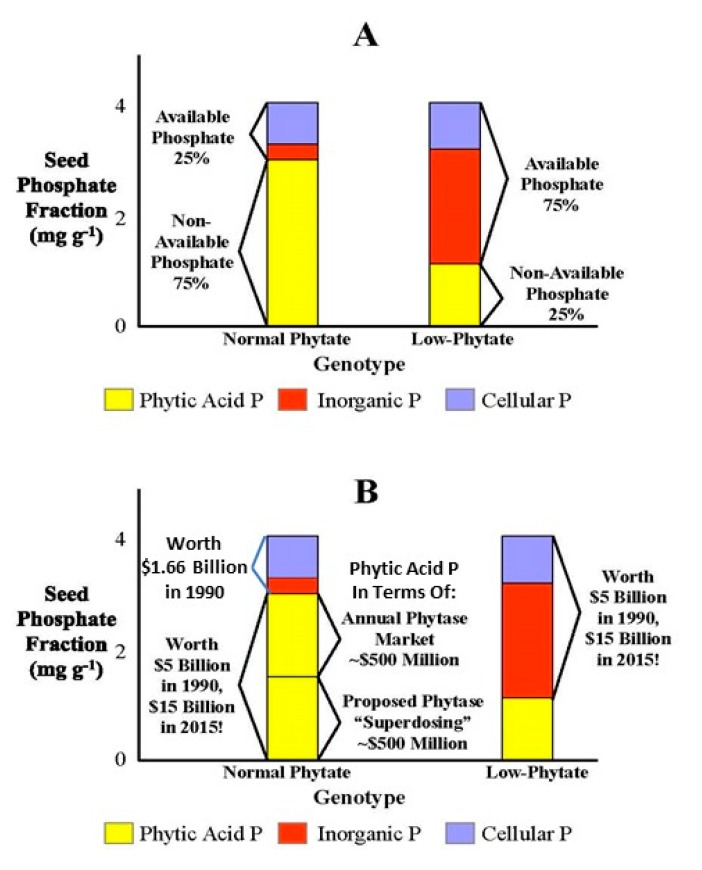Figure 3.
(A) Typical seed phosphorus (P) fractions and their bioavailability to non-ruminant animals, in a wild-type or “normal phytate” crop type versus a low-phytate line. “Available phosphate” and “non-available phosphate” refers to that fraction of seed total P that would be absorbed and utilized following consumption by non-ruminants. This is only an illustration for discussion purposes and does not represent actual data for any given crop or low-phytate line. Cereal crops usually have 3.0 to 4.0 mg Total P g-1, such as in the illustration. Legume and oil-seed crops can often have 5.0 or more mg Total P g-1, but the relative proportions of phytic acid P, inorganic P and “cellular P” remain similar to that observed in cereal grains. “Cellular P” refers to all P other than phytic acid P and inorganic P, such as P found in DNA, RNA, protein, carbohydrate, lipids, etc. (B) The same bar graph of seed P fractions but with: (1) the relative value in U.S. dollars of the respective seed P fractions, expressed in terms of the market price for rock phosphate (adjusted for inflation), in 1990 versus 2015 and (2) the relative value of the current “phytase market” and the proposed “superdosing” of phytase.

